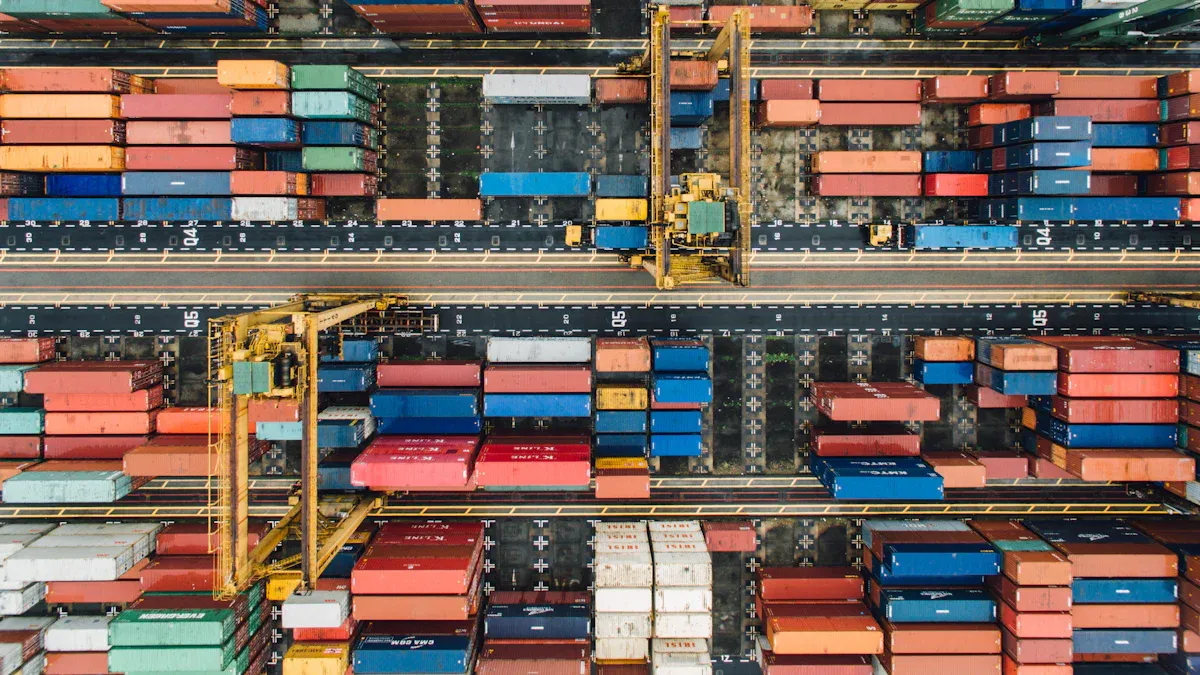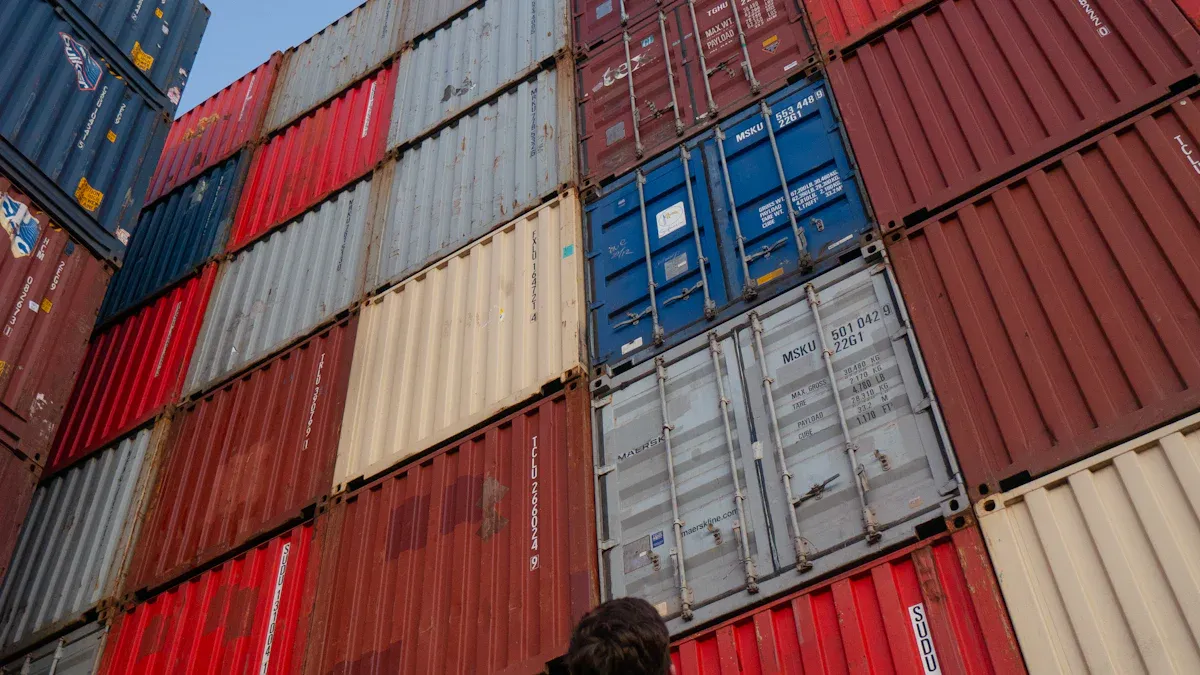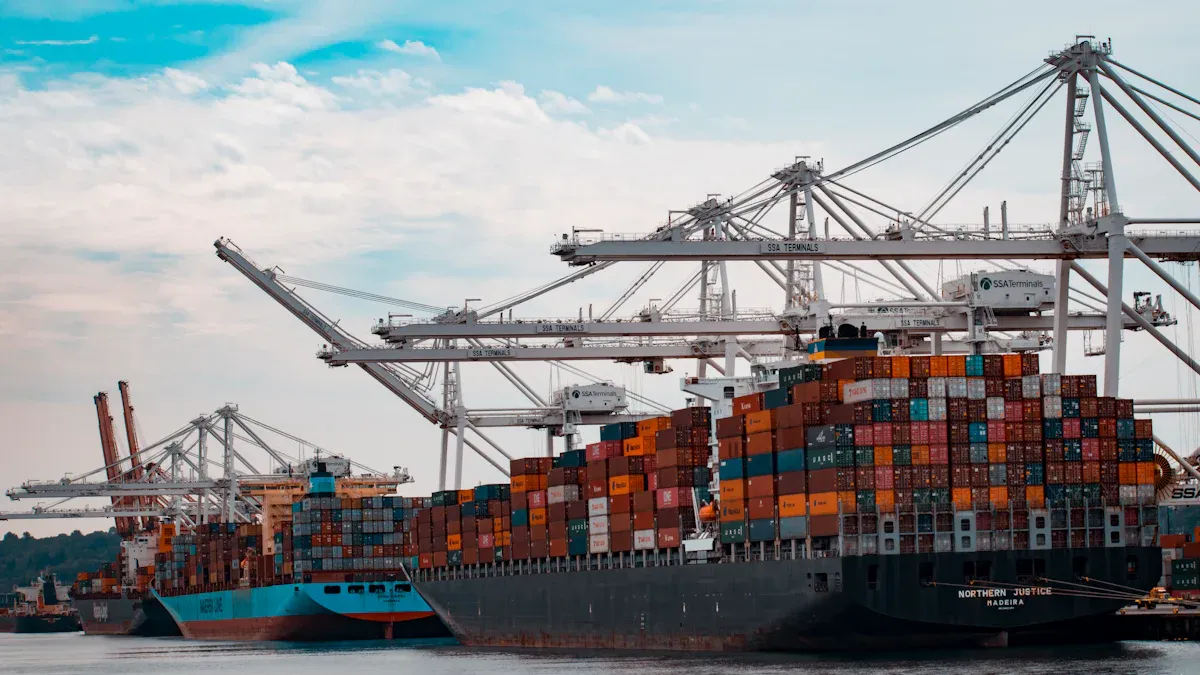Cost Comparison: Importing from China vs. Local Sourcing

Making informed sourcing decisions requires you to evaluate costs carefully. Factors like production, transportation, and scalability directly impact your bottom line. For example, the total cost of ownership includes hidden expenses, while quality issues can lead to additional costs. Bulk Purchasing Goods often reduces unit prices but demands higher upfront investment. By understanding these elements, you can optimize your sourcing strategy.
Key Takeaways
Look at all costs, like making, shipping, and taxes, to choose wisely.
Think about local sourcing perks, like lower transport costs and quicker delivery, which help save money.
Know the hidden costs of global sourcing, like import fees and checking quality, to avoid surprise expenses.
Costs of Importing from China

Production Costs and Bulk Purchasing Goods
China's manufacturing sector offers some of the lowest production costs globally. You can benefit from economies of scale by engaging in bulk purchasing goods. This approach reduces the per-unit cost, making it ideal for businesses aiming to maximize profitability. However, bulk orders require significant upfront investment, which may strain cash flow for smaller companies. Additionally, you must consider the potential for overstocking, which can lead to increased storage costs and tied-up capital.
Shipping and Freight Expenses
Transportation costs vary significantly based on the mode of freight you choose:
Air freight provides speed but comes with high costs due to fuel consumption.
Sea freight is more cost-effective for large shipments, though it takes longer to deliver.
Land freight offers flexibility, with costs depending on the service provider and distance.
Selecting the right mode depends on your budget and delivery timeline. While sea freight minimizes cost, it may not suit time-sensitive shipments. Balancing these factors ensures efficient supply chain management.
Tariffs, Customs Duties, and Taxes
Importing goods from China involves navigating complex tariff structures. Typical tariff rates include:
General rates and most-favored-nation (MFN) rates.
Preferential rates for critical industries.
Additional tariffs imposed on certain U.S. goods since 2018.
Understanding these rates helps you estimate the total cost of importing. Failure to account for tariffs and duties can lead to unexpected expenses, impacting your profit margins.
Lead Times and Inventory Management
Longer lead times are a common challenge when importing from China. These delays increase the need for higher safety stock levels, which raises inventory holding costs. Higher holding costs reduce cash flow and profitability. Additionally, stockouts caused by delayed shipments can result in lost sales and eroded customer loyalty. Managing lead times effectively is crucial to maintaining a balance between inventory levels and operational costs.
Tip: Partnering with reliable suppliers and using demand forecasting tools can help you mitigate the risks associated with long lead times.
Costs of Local Sourcing

Labor Costs in Domestic Markets
Labor costs in domestic markets often differ significantly from those in international markets. Over the past decade, hourly wages in China have risen by 10% to 15% annually due to improved working conditions and demographic changes. In contrast, domestic markets like the U.S. have experienced slower wage growth, reflecting a steadier economic expansion. While domestic labor may still be more expensive than China's, the gap has narrowed. You should evaluate whether higher wages are offset by benefits like faster communication, cultural alignment, and reduced lead times.
Material and Manufacturing Expenses
Material and manufacturing expenses can vary widely depending on your industry and location. Local sourcing often provides access to high-quality materials and advanced manufacturing technologies. These advantages can reduce defects and improve product consistency. However, you may face higher raw material costs compared to importing from China. Conducting a thorough analysis of your supply chain can help you determine whether the higher upfront costs are justified by long-term benefits like improved quality and customer satisfaction.
Transportation and Distribution Savings
Local sourcing offers significant cost savings in transportation and logistics. By eliminating long-distance shipping, you reduce freight costs and minimize the risk of delays. Local suppliers often provide competitive pricing due to their lower transportation overhead. Additionally, shorter delivery times allow you to maintain leaner inventory levels, reducing storage costs. These savings can improve your cash flow and operational efficiency, making local sourcing a compelling option for businesses prioritizing agility.
Regulatory and Compliance Costs
Compliance requirements for local sourcing are generally less complex than those for international sourcing. You avoid navigating trade agreements, customs regulations, and international product safety standards. Instead, you focus on meeting domestic regulations, which are often more straightforward. This simplicity reduces administrative burdens and ensures faster time-to-market for your products.
Note: While local sourcing simplifies compliance, you should still stay updated on regional laws and industry-specific standards to avoid unexpected penalties.
Global Sourcing vs. Local Sourcing: A Direct Comparison
Cost-Effectiveness for Small vs. Large Businesses
The cost advantages of global sourcing vary depending on the size of your business. Small businesses often benefit from reduced production costs by leveraging lower labor and material expenses in international markets. Additionally, global suppliers offer flexibility in order sizes, helping you manage demand fluctuations without overcommitting resources. Large businesses, on the other hand, can maximize cost savings through economies of scale, as they typically place larger orders.
Advantage | Description |
|---|---|
Cost Savings | Global sourcing can lead to significant reductions in overall expenditure by leveraging lower costs in different countries. |
Scalability and Flexibility | Global sourcing companies can adjust to varying order sizes, helping small businesses manage demand fluctuations effectively. |
While global sourcing offers cost savings, local sourcing may provide better value for businesses prioritizing shorter lead times and reduced logistics expenses. Evaluating your sourcing strategy based on your business size and operational needs is essential.
Scalability and Flexibility of Global Sourcing
Global sourcing provides unmatched scalability and flexibility, making it a preferred choice for businesses experiencing growth. You gain access to larger production capacities and a vast network of suppliers, enabling you to scale operations efficiently.
Global sourcing provides access to larger production capacities compared to local sourcing.
It offers flexibility to adjust operations based on demand fluctuations.
A vast network of suppliers allows for efficient scaling of operations.
Global sourcing companies can accommodate a wide range of order sizes, making them suitable for both small and large businesses.
This flexibility supports long-term strategies by reducing production costs, fostering innovation, and enabling market expansion. However, you must weigh these advantages against potential disadvantages, such as longer lead times and higher logistics costs.
Hidden Costs and Long-Term Implications
While global sourcing offers cost advantages, hidden costs can impact your long-term profitability. These include shipping fees, customs duties, quality control expenses, and currency fluctuations. For example:
Import tariffs and duties, which vary based on product value and origin.
Quality control and inspection fees, necessary for maintaining product standards.
Currency exchange fees, which can fluctuate and add to overall costs.
Local sourcing, in contrast, minimizes logistics expenses and avoids international duties. It also enhances supply chain resilience by reducing risks associated with global disruptions. When choosing between sourcing options, consider how these hidden costs align with your long-term sourcing strategy.
Additional Considerations Beyond Costs
Quality Control and Consistency
Ensuring consistent product quality is a critical consideration when choosing between local and global sourcing. Importing from China often presents challenges such as:
Supplier evaluation difficulties.
Communication barriers due to language and cultural differences.
Variability in product quality compared to documented processes.
These issues can lead to misaligned expectations and increased costs for quality assurance. On the other hand, local sourcing offers several advantages. Proximity to suppliers allows you to conduct inspections more easily, ensuring higher quality standards. Local suppliers often understand regional regulations and consumer preferences, which enhances product quality. Faster response times also help you address quality issues promptly, reducing the risk of customer dissatisfaction. However, local suppliers may not always meet the same quality standards as global suppliers, leading to occasional variability.
By working closely with your suppliers and implementing robust quality control measures, you can minimize risks and maintain consistency in your supply chain.
Sustainability and Environmental Impact
Sustainability has become a key factor in sourcing decisions. Local suppliers often have a smaller environmental footprint due to reduced transportation distances, which lowers emissions and energy consumption. Additionally, local sourcing supports traceability, allowing you to build stronger relationships with producers and ensure ethical practices.
Aspect | Local Suppliers | Global Suppliers |
|---|---|---|
Economic Impact | Supports local economies | Focuses on cost efficiency |
Environmental Impact | Reduces emissions and transportation costs | May increase emissions due to longer transport routes |
Traceability | Improved traceability and consumer-producer relations | Often less traceable due to distance |
Risk Mitigation | Lower risk from local disruptions | Risk diversification through diversified sourcing |
While global suppliers may offer access to specialized expertise, their longer supply chains often result in higher emissions and less transparency. Balancing sustainability with cost considerations is essential for building a responsible and resilient supply chain.
Supply Chain Risks and Disruptions
Supply chain resilience is vital for maintaining operational efficiency. Importing from China exposes you to risks such as geopolitical tensions, trade restrictions, and natural disasters. These factors can disrupt supply chains, leading to delays and increased costs. Other common risks include:
Complex and frequently changing regulations.
Intellectual property theft and counterfeiting concerns.
Transportation delays due to infrastructure limitations.
Currency fluctuations impacting overall costs.
Local sourcing mitigates many of these risks. Shorter supply chains reduce vulnerability to disruptions, while proximity to suppliers allows for quicker responses to unexpected issues. Missing shipments can often be replaced in days rather than weeks, enhancing reliability. Additionally, local sourcing avoids the complexities of international logistics, making it a more predictable option.
By diversifying your sourcing strategy and maintaining strong supplier relationships, you can reduce risks and ensure supply chain resilience.
Choosing between importing from China and local sourcing depends on your business goals. Importing offers lower production costs and scalability, while local sourcing provides faster lead times and reduced risks.
Tip: Evaluate your priorities—cost savings, quality, or speed. Use tools like cost analysis spreadsheets to compare options and make informed decisions.
FAQ
What are the main cost factors to consider when choosing between global and local sourcing?
You should evaluate production costs, transportation expenses, tariffs, and lead times. Each factor impacts your overall sourcing strategy and profitability.
How can small businesses manage the risks of global sourcing?
Small businesses can mitigate risks by diversifying suppliers, using demand forecasting tools, and maintaining safety stock. These steps ensure supply chain stability.
Is local sourcing always more sustainable than global sourcing?
Local sourcing often reduces emissions due to shorter transportation distances. However, sustainability depends on factors like energy use, material sourcing, and supplier practices.
See Also
Comprehensive Tips for Importing Flashlights from China
Boosting Revenue by Buying Flashlights at Wholesale Prices
Finding Quality Flashlights for Your Import Business Affordably
About US
Follow Us
Hello,Friend,
I am Mary from Helius, we are manufacturer of LED lighting products with more than a decade of experiences.
We offer hot selling products in market and guarantee the quality with competitive cost.
Let’s have more discussion on your inquiry.
Or you can reach out me via what’s up/tele gram +8618123952945 if it’s favorable to you.
Address
4th Floor, Building A16, Intelligent terminal industrial park of Silicon Valley, Dafu Industrial Zone,Guanlan, Shenzhen, 518110 China
Contacts
mary@heliuslights.com
heliuslight04@hotmail.com
+0086 18123952945
